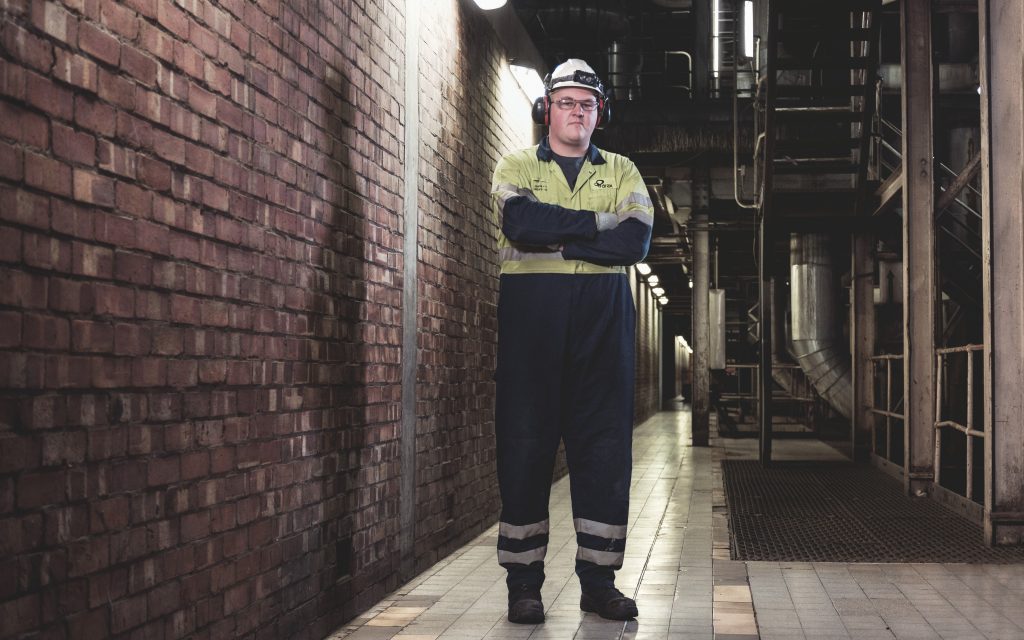“It’s like a living animal, is Drax. It will break, it will fail, it will need maintenance,” says Gareth Newton. As a mechanical engineer in one of the power station’s maintenance teams, he’s a man with a closer eye on that animal than most.
And when something does need fixing or improving, it’s his job to make sure it happens. It’s a task that keeps him busy.
On top of the teams
“I’ve got a team servicing the filter fans. I’ve got a team doing a filter change on a biomass unit. Then I’ve got another company doing a pipework replacement on a discharge line for me. Somebody else is doing a service on the belt cleaners,” Newton says, listing half a typical day’s responsibilities. On any given day, he oversees a number of different teams that carry out a variety of maintenance tasks, and more often than not that list is a long one.
He’s a part of the Materials Handling team who deal with all the material arriving and leaving the power station. This includes the biomass and coal fuel coming in, and the ash, gypsum and other byproducts from the generation process going out.
It means he has a hand in the maintenance of almost all parts of the plant, from the compressed wood pellet storage domes to the boiler. With such a broad perspective of such a complex plant, he knows it’s not always the things you expect to fail that need fixing.
Monitoring the machine
“It’s a machine – it’s being used. It’s not a showpiece or something in a museum. It’s real and every now and then it will throw a gear out and stop,” he says. Those failures don’t always happen to a schedule, so when something does go wrong it can be unexpected.
“You might have a £50,000 gearbox sat in the stores ready and waiting to replace a faulty one, but it will be the £10 probe on a conveyer belt you never thought would break that fails and holds the whole system up,” he says. When something like that happens, he adds, it’s not always about having the exact tool that can fix it right there and then, it’s about thinking out of the box.
“The biggest part of this job, and I think it’s one of the biggest parts of heavy industry engineering, is not fixing or modifying things with what you’ve got,” he says. “It’s about using what you haven’t got to try and engineer your way out.”
He continues: “If you haven’t got a tool or part that you need, can you make something new, can you find a way to make it work? Or, do you even need it?”
“It’s like a living animal, is Drax. It will break, it will fail, it will need maintenance.”
Keeping your hands dirty
Newton grew up around engineering. His father ran a salvage yard and precious metals business and would bring back broken bits of machinery for the kids to fix as toys. “I’ve always had dirty hands,” he says.
It’s something that’s stuck with him. Today, even though he now spends a large proportion of his time monitoring jobs at a computer or moving between teams, it’s the practical side of the job that keeps him interested. “The best part of the job is working with your hands.”
And even though the demands of the living animal that is Drax can sometimes keep him on site longer than his working hours, it’s a beast he’s happy to look after.
“It’s a job you either love or hate. If you didn’t enjoy the engineering side you probably wouldn’t like it because there’s a lot of ingenuity and thinking on your feet needed,” he says. “But there are a lot of jobs out there that I wouldn’t want.”












